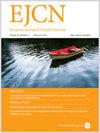The use of portable A-mode ultrasound in appendicular lean mass measurements among older adults: a comparison study with dual-energy X-ray absorptiometry and handgrip strength
IF 3.6
3区 医学
Q2 NUTRITION & DIETETICS
引用次数: 0
Abstract
Strength and muscle mass are key factors for the diagnosis of sarcopenia. The EWGSOP2 recommended using ultrasound (US) as a reliable device to measure muscle mass (MM), but A-mode US still needs to be validated for older adults. This study aimed to evaluate the association between measurements of muscle thickness (MT) by portable A-mode US and, muscle quantity by Dual-Energy X-ray absorptiometry (DXA) in older adults. Cross-sectional study, with 115 participants included. Muscle mass was assessed by DXA and MT of the biceps, triceps, anterior thigh, and calf by A-mode US and handgrip strength by a dynamometer. The majority were women (n = 96; 83%), 69 ± 6 years. The MT sum (biceps, triceps, thigh, and calf) assessed by the US was not associated with the appendicular lean mass (ALM) assessed by DXA after controlling for sex and age (R2 = 0.524; p = 0.139; effect size = 0.53). The MT sum biceps and triceps was still significantly associated with MM arms/2 even when controlling for sex and age (which were also significant) (R2 = 0.551; p < 0.001; effect size = 0.56). The MT sum thigh and calf was not associated with MM legs/2 in adjusted models (R2 = 0.499; p = 0.688; effect size = 0.51). This finding shows that the portable A-mode US may not be an appropriate method for estimating MM in extremities (the sum of arms and legs), but can be appropriate for estimating only MM arms in healthy older adults.使用便携式 A 型超声波测量老年人阑尾瘦肉质量:与双能 X 射线吸收测量法和手握力的比较研究。
背景/目的:力量和肌肉质量是诊断肌肉疏松症的关键因素。EWGSOP2 建议使用超声波(US)作为测量肌肉质量(MM)的可靠设备,但 A 型 US 仍需对老年人进行验证。本研究旨在评估便携式 A 型 US 测量肌肉厚度(MT)与双能量 X 射线吸收测量法(DXA)测量肌肉数量之间的关联:方法:横断面研究,包括 115 名参与者。通过 DXA 评估肌肉质量,通过 A 型超声波评估肱二头肌、肱三头肌、大腿前侧和小腿的肌肉密度,通过测力计评估手握力量:大部分为女性(n = 96;83%),69 ± 6 岁。在对性别和年龄进行控制后,A型超声波评估的MT总和(肱二头肌、肱三头肌、大腿和小腿)与DXA评估的关节瘦体重(ALM)不相关(R2 = 0.524;P = 0.139;效应大小 = 0.53)。肱二头肌和肱三头肌MT总和与MM臂/2仍有显著相关性,即使控制了性别和年龄(也有显著相关性)(R2 = 0.551;P 2 = 0.499;P = 0.688;效应大小 = 0.51):这一发现表明,便携式 A 型 US 可能不是估算四肢 MM(手臂和腿部的总和)的合适方法,但可以仅估算健康老年人的手臂 MM。
本文章由计算机程序翻译,如有差异,请以英文原文为准。
求助全文
约1分钟内获得全文
求助全文
来源期刊
CiteScore
10.60
自引率
2.10%
发文量
189
审稿时长
3-6 weeks
期刊介绍:
The European Journal of Clinical Nutrition (EJCN) is an international, peer-reviewed journal covering all aspects of human and clinical nutrition. The journal welcomes original research, reviews, case reports and brief communications based on clinical, metabolic and epidemiological studies that describe methodologies, mechanisms, associations and benefits of nutritional interventions for clinical disease and health promotion.
Topics of interest include but are not limited to:
Nutrition and Health (including climate and ecological aspects)
Metabolism & Metabolomics
Genomics and personalized strategies in nutrition
Nutrition during the early life cycle
Health issues and nutrition in the elderly
Phenotyping in clinical nutrition
Nutrition in acute and chronic diseases
The double burden of ''malnutrition'': Under-nutrition and Obesity
Prevention of Non Communicable Diseases (NCD)

 求助内容:
求助内容: 应助结果提醒方式:
应助结果提醒方式:


